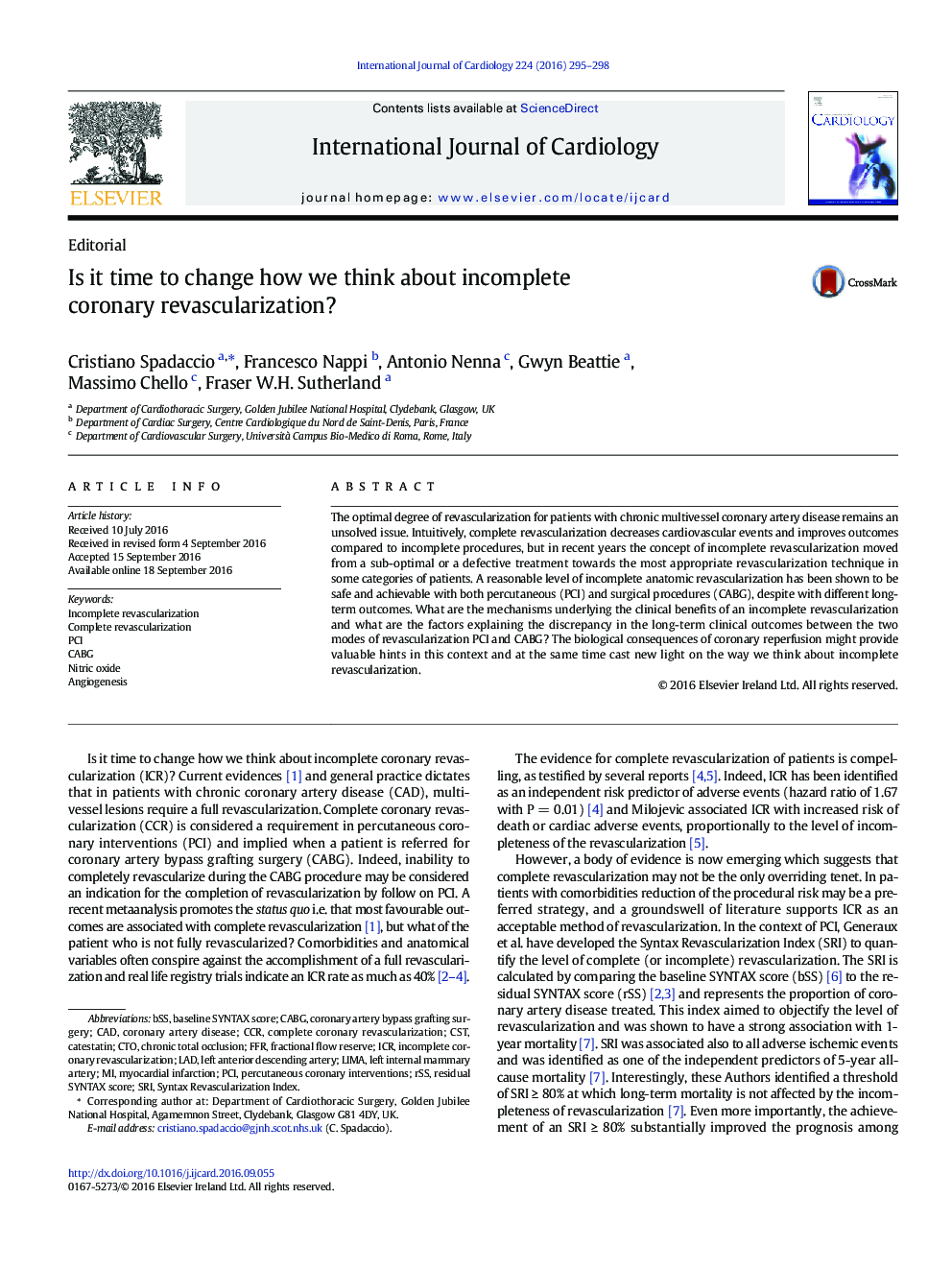| Article ID | Journal | Published Year | Pages | File Type |
|---|---|---|---|---|
| 5962309 | International Journal of Cardiology | 2016 | 4 Pages |
The optimal degree of revascularization for patients with chronic multivessel coronary artery disease remains an unsolved issue. Intuitively, complete revascularization decreases cardiovascular events and improves outcomes compared to incomplete procedures, but in recent years the concept of incomplete revascularization moved from a sub-optimal or a defective treatment towards the most appropriate revascularization technique in some categories of patients. A reasonable level of incomplete anatomic revascularization has been shown to be safe and achievable with both percutaneous (PCI) and surgical procedures (CABG), despite with different long-term outcomes. What are the mechanisms underlying the clinical benefits of an incomplete revascularization and what are the factors explaining the discrepancy in the long-term clinical outcomes between the two modes of revascularization PCI and CABG? The biological consequences of coronary reperfusion might provide valuable hints in this context and at the same time cast new light on the way we think about incomplete revascularization.
